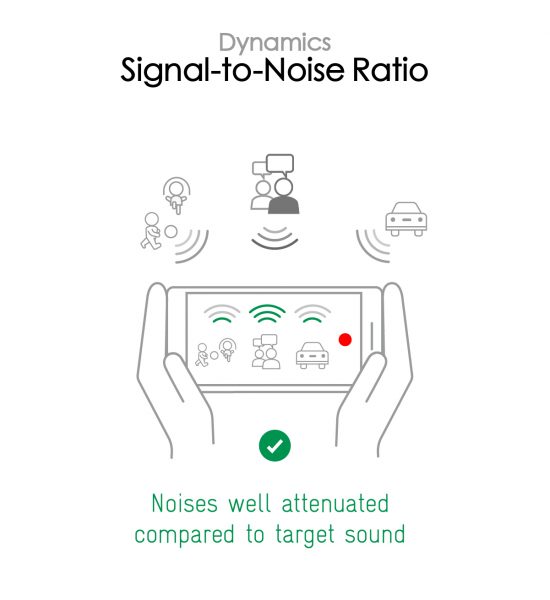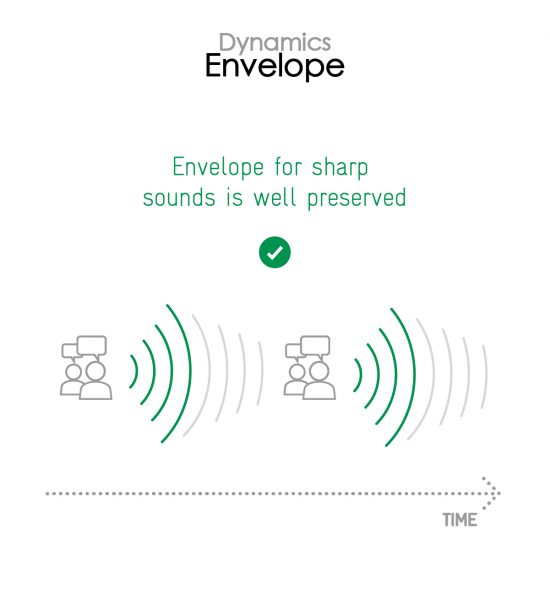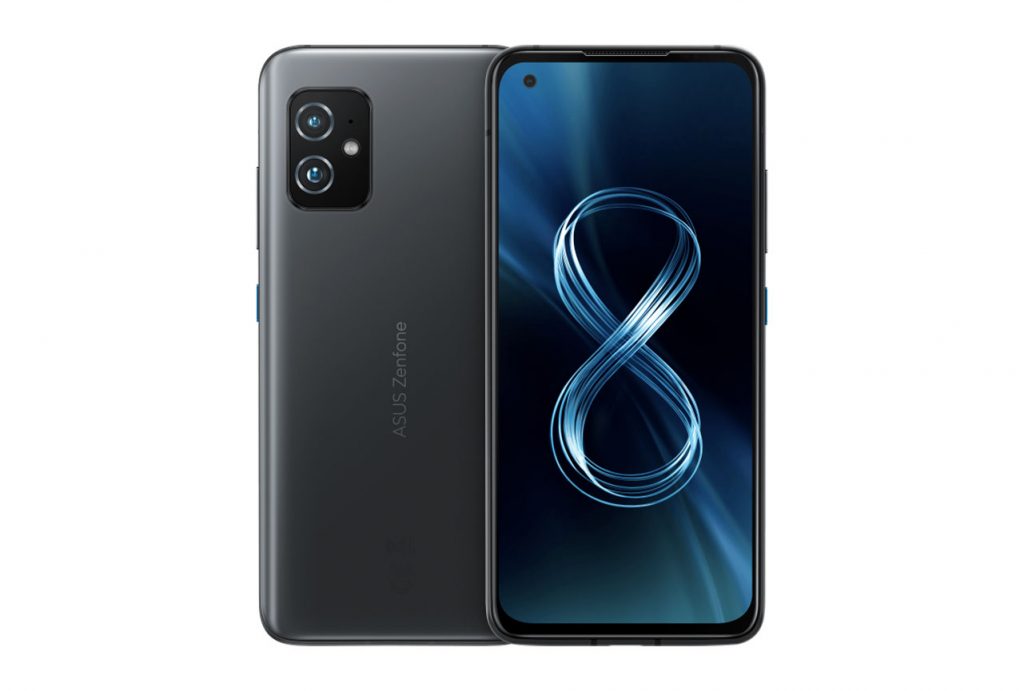Launched in May 2021, the Asus Zenfone 8 is one of the currently most compact flagship-level smartphones. But don’t let the small package fool you: the Asus comes with top-end hardware, including a 5.9-inch Super AMOLED display with 1080 x 2400-pixel resolution and 120 Hz refresh rate, as well as Qualcomm’s top-of-the-line 888 chipset.
In the audio department, Asus claims its Zenfone 8 is nothing short of a “treat for your ears” with higher volume, wider dynamic range, deeper bass and super tonal balance (but we won’t know higher, wider and deeper than what). On the recording side of things, videos benefit from a wind filter and an audio zoom algorithm (called Acoustic Focus Mode by Asus). And last but not least, despite its compact design, the latest Zenfone brings the 3.5 mm audio jack back from the dead!
Key audio specifications include:
- Two speakers (bottom right and top center)
- Audio zoom
- Wind filter
- Hi-Res Audio
About DXOMARK Audio tests: For scoring and analysis in our smartphone audio reviews, DXOMARK engineers perform a variety of objective tests and undertake more than 20 hours of perceptual evaluation under controlled lab conditions. This article highlights the most important results of our testing. Note that we evaluate both Playback and Recording using only the device’s built-in hardware and default apps.
(For more details about our Playback protocol,
click here; for more details about our Recording protocol, click here.)
Test summary
Scoring
Sub-scores and attributes included in the calculations of the global score.

Asus Zenfone 8


 77th
77th
 25th
25th
Playback
Pros
- Warm and colorful timbre that doesn’t become aggressive at maximum volume
- Sharp attack and powerful punch
- Wide stereo scene rendition with good localizability
Cons
- Loss of control in bass distortion as content reaches too low
- Impaired bass precision
- Lack of clarity and brightness.
- Compression at high volume.
Recording
Pros
- Good tonal balance overall in life videos
- Good spatial performance in life videos
Cons
- Muffled Tonal Balance is Selfie Video and and in Meeting use case
- Strong compression that affects intelligibility of voices in In/Out scenario
- Volume changes not so subtly in reaction to loud noises. For a constant loud noise in the background, loudness decreases progressively
With a global Audio score of 66, the Zenfone 8 secures a midpack position among all the phones we’ve tested to date. Playback is characterized by a warm and colorful timbre, a wide stereo scene rendition, and punchy dynamics which makes it suitable for playing games. The speakers are particularly skilled at softer volumes, which allow dynamic contents to remain perfectly intelligible. However, uncontrolled bass, a lack of brightness and too many artifacts take the phone out of the running if what you’re looking for is a device to listen to music with or watch movies on.
As a recording device, while the Zenfone 8 doesn’t excel in any use case, it nonetheless manages to keep its head — and its microphones — above the water in every use case. Its strengths are a balanced frequency response and good spatial attributes in life videos, along with appreciable loudness and dynamics across every use case. That all said, tonal balance is muffled in selfie videos and meeting recordings, spatial results are middling, and artifacts — both spectral and temporal — are poorly managed.
Sub-scores explained
The DXOMARK Audio overall score of 66 for the Asus Zenfone 8 is derived from its Playback and Recording scores and their respective sub-scores. In this section, we’ll take a closer look at these audio quality sub-scores and explain what they mean for the user.
Playback

Timbre
Asus Zenfone 8
68
89
Timbre tests measure how well a phone reproduces sound across the audible tonal range and takes into account bass, midrange, treble, tonal balance, and volume dependency.
The Zenfone 8 delivers a pleasant timbre, warm, colorful, with very good midrange and satisfying bass restitution at nominal level.
The timbre’s main limitations are at both ends of the spectrum. While a deeper extension and a more discreet distortion would have done low-end much good, treble is somewhat dull, and lacks brightness. This darker tonal balance is not too problematic at nominal level, however, it intensifies as volume increases. Upper midrange is also slightly lacking, which can occasionally make for a muddy or blurry rendering.

Dynamics
Asus Zenfone 8
66
81
DXOMARK’s dynamics tests measure how well a device reproduces the energy level of a sound source, and how precisely it reproduces bass frequencies.
Dynamic attributes are particularly heterogeneous. Attack is mostly sharp, securing well-defined transients, but can in some cases be somewhat hindered by muddiness in the timbre, or compression at high volume. Punch is very good most of the time, substantiated by well-established power in the low-midrange register. Relatively unmoved by the dynamic compression, it remains strong regardless of the speakers’ volume.


Bass precision, on the other hand, is quite inconsistent. Internal audio processing renders the bass envelope inaccurate most of the time, with either a sustain that sounds unusually exaggerated by distortion, or predominant attack.

Spatial
Asus Zenfone 8
62
88
The sub-attributes for perceptual spatial tests include localizability, balance, distance, and wideness.
The Zenfone 8’s speakers turn in an honorable performance overall in terms of spatial reproduction: the stereo field is fairly wide, localizability of the sources within the field is above average, and distance perception, albeit slightly impaired by the lack of upper midrange, is still decent.
Note that, as in many other devices, the stereo field doesn’t follow the device’s orientation in inverted landscape when using the music app. Finally, balance is marginally skewed to the right, but nothing too problematic.

Volume
Asus Zenfone 8
63
91
Volume tests measure both the overall loudness a device is able to reproduce and how smoothly volume increases and decreases based on user input.
Minimum volume is very well tuned, allowing dynamic content (such as movies or classical music) to remain fully intelligible, and the distribution of volume steps from softest to loudest level is rather consistent. That said, the speakers’ maximum volume if a bit below average, besides being affected by compression.
Here are a few sound pressure levels (SPL) measured when playing our sample recordings of hip-hop and classical music at maximum volume:
| Hip-Hop | Classical | |
| Asus Zenfone 8 | 68.1 dBA | 66.7 dBA |
| OnePlus 9 | 75.9 dBA | 72.4 dBA |
| Google Pixel 5 | 75.2 dBA | 72.4 dBA |

Artifacts
Asus Zenfone 8
80
113
Artifacts tests measure how much source audio is distorted when played back through a device’s speakers.
Distortion can occur both because of sound processing in the device and because of the quality of the speakers.
With an artifacts sub-score of 80 in playback, the Zenfone 8 is one of the least skilled devices we’ve tested to date when it comes to keeping undesirable sounds to a minimum.
While playback is mostly clean at nominal level, higher volumes trigger not only distortion, but also compression, and even pumping. Bass distortion remain fairly discreet on average but get significantly stronger when low-end content is prominent, resulting in severe resonance-like artifacts in the lower register.
Recording

Timbre
Asus Zenfone 8
67
91
Life videos benefit from a fairly balanced frequency response with sufficient treble strength and clean midrange. Bass can be a bit too prominent though, which can make the overall result sound slightly boomy.
In selfie videos, memos and meeting configurations, in addition to the prominent bass, a lack of high-end extension generates a fairly muffled sound, whereas when recording in loud environments, both high- and low-end are recessed.

Dynamics
Asus Zenfone 8
68
81
In terms of dynamics preservation in recorded audio, meeting recordings fare best, closely followed by selfie, then life videos.


While the signal-to-noise ratio is on target in life and selfie videos, it is at its best in memos. As for the sound envelope, it is particularly precise in videos, and in meetings.

Spatial
Asus Zenfone 8
58
78
The Zenfone 8 turns in an average performance in this category. The phone’s timbre performance in recording is mirrored in the spatial domain: while localizability is precise in life videos, it is rendered blurry in selfie videos by the lack of brilliance. Wideness, which is good in the former use case, is also limited in the latter. Since the human ear uses higher frequencies to track movements and assess a space, it is only logical that these two attributes would be impacted by a lack of treble. Further, in meetings, voices seem distant.

Volume
Asus Zenfone 8
68
99
The phone’s volume performance is fairly good, with an average maximum level reachable without perceivable distortion, but good loudness across all use cases. Here are our test results, measured in LUFS (Loudness Unit Full Scale); as a reference, we expect loudness levels to be above -24 LUFS for recorded content:
| Meeting | Life Video | Selfie Video | Memo | |
| Asus Zenfone 8 | -20.4 LUFS | -20.1 LUFS | -18.1 LUFS | -18.5 LUFS |
| OnePlus 9 | -29.5 LUFS | -20.6 LUFS | -19.4 LUFS | -19.4 LUFS |
| Google Pixel 5 | -28.8 LUFS | -20 LUFS | -19 LUFS | -22.8 LUFS |

Artifacts
Asus Zenfone 8
56
97
Asus’s latest compact phone does a below-average job of controlling sonic artifacts in recorded audio. In urban and home scenarios, shouting voices can trigger slight clipping. In selfie videos, unintended changes in volume occur. In loud environments, such as concerts, harsh clipping is noticeable on sibilants. In both indoor and outdoor real-life scenarios, our engineers observed a gradual volume decrease, which makes voices become less intelligible and more distorted. Finally, the noise-canceling algorithm can induce severe alterations in timbre. You can check for artifacts yourself in the following sample recording, made in a controlled environment:

Background
Asus Zenfone 8
39
60
Considering the microphones’ timbre, spatial and artifacts results, background recordings are not of the highest quality. In life and selfie videos, the excess of bass makes the background sound boomy, and unnatural. In real-life scenarios, heavy compression springs into action.
Conclusion
Asus’s “big on performance, compact in size” phone isn’t that big on audio performance: If you’re looking for a masterful audio phone in the same price range, other models, such as the Black Shark 4 Pro, would make a far better choice. If its non-audio features are your priority, know that the Zenfone 8’s speakers deliver decent in-game audio and good playback at softer volumes, along with fairly good sound attributes in videos filmed with the rear cameras.

 English
English 中文
中文

DXOMARK invites our readership (you) to post comments on the articles on this website. Read more about our Comment Policy.